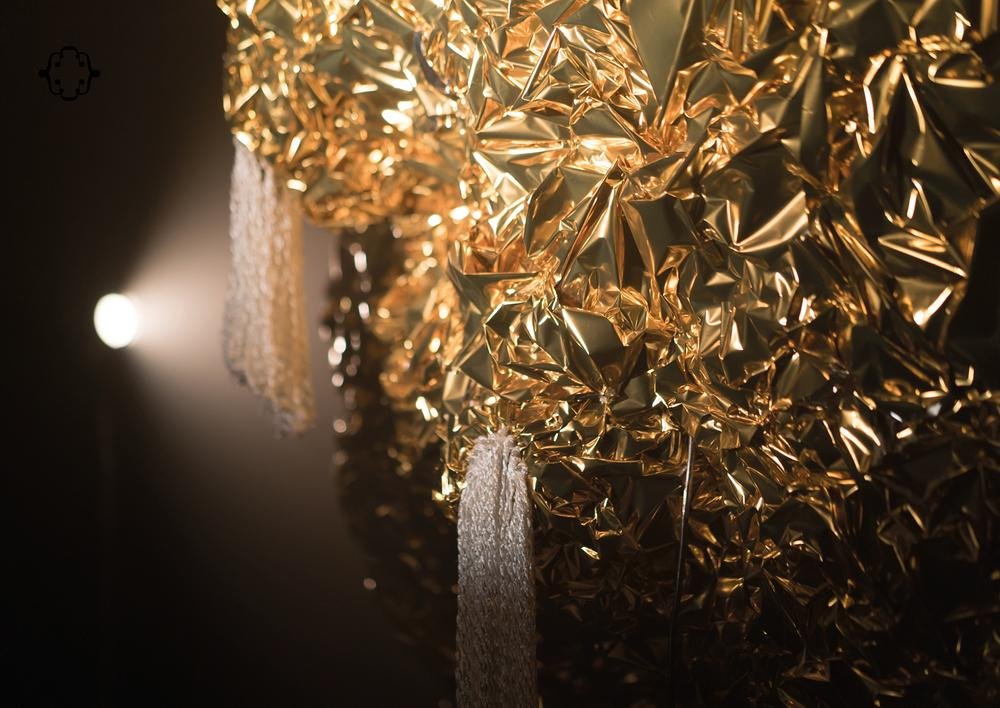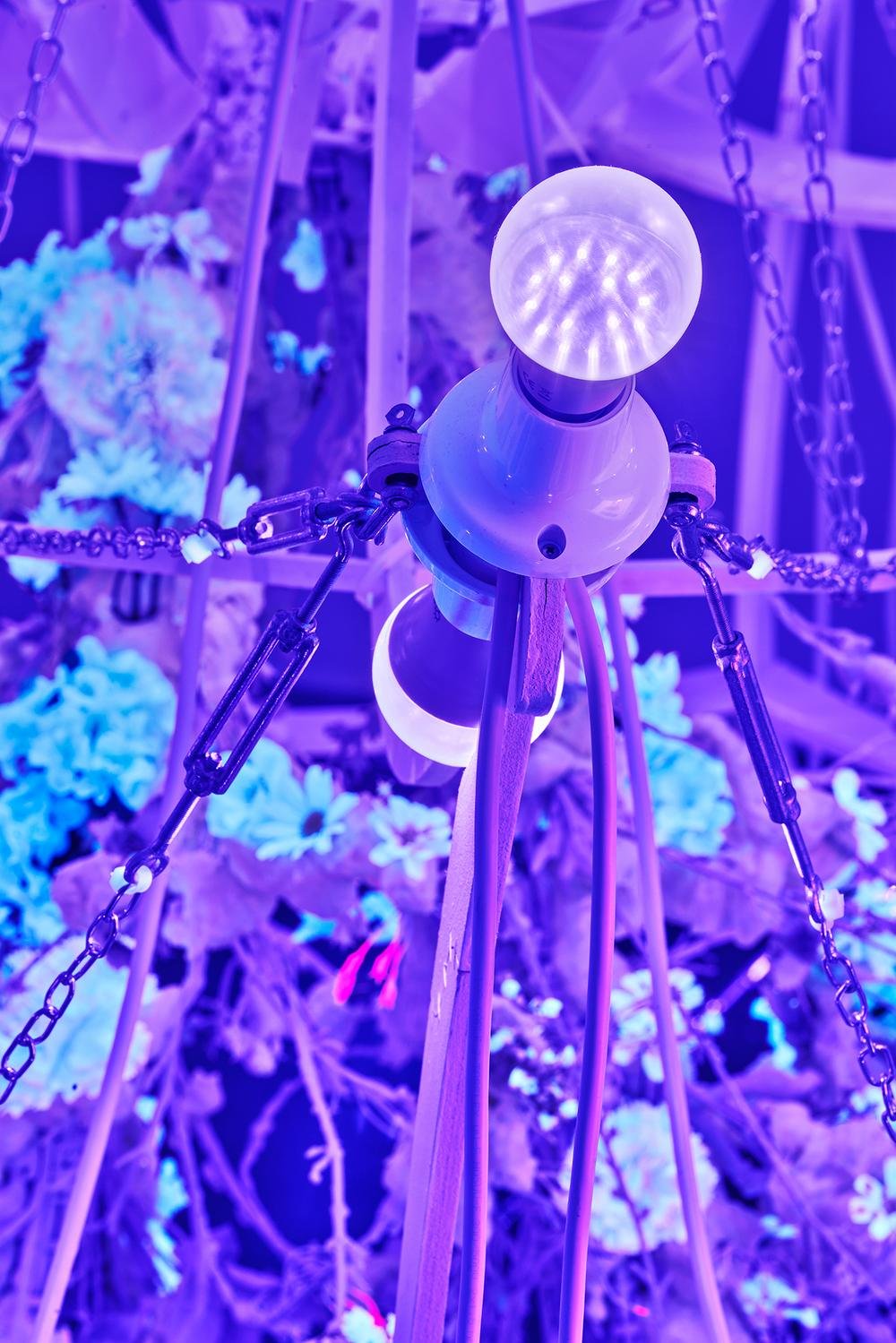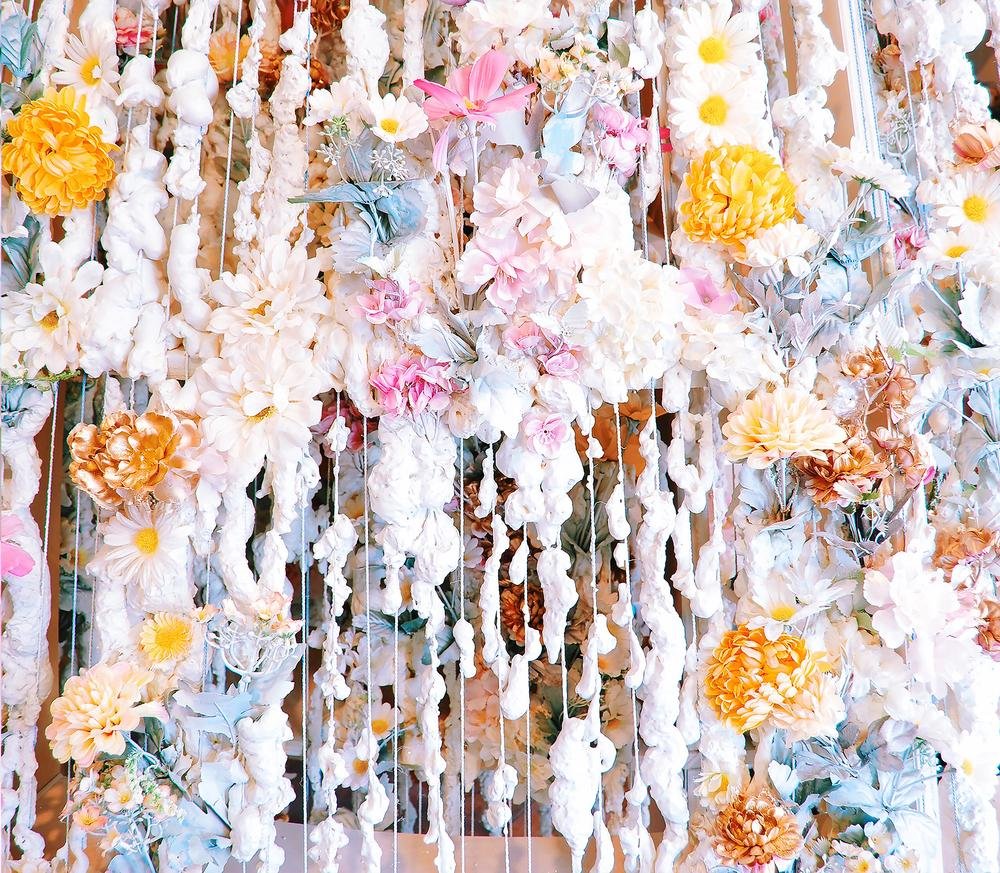Current and Upcoming Exhibitions
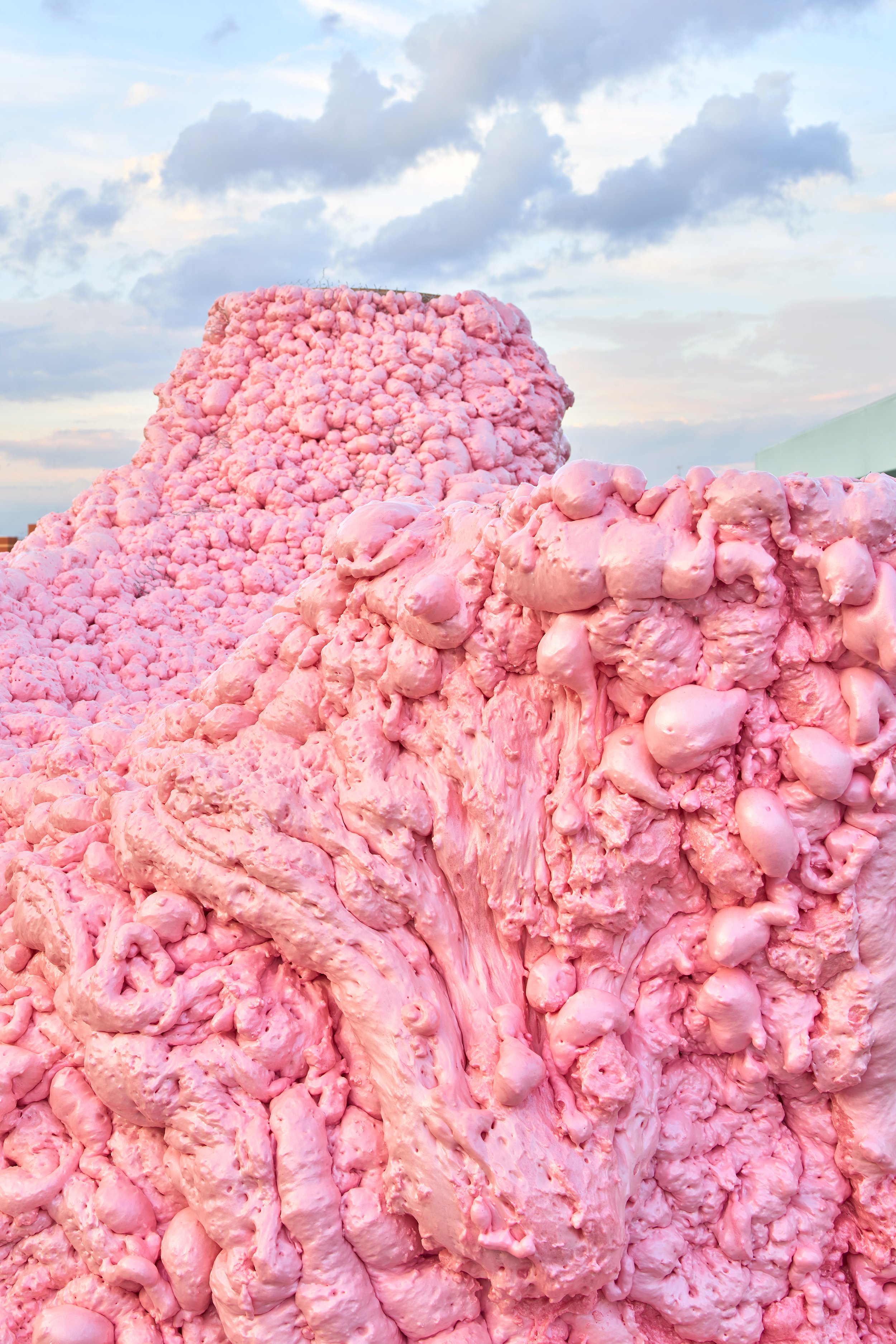
Subject Studies: Reorientations
Subject Studies’ inaugural 2022 theme, Reorientations, developed by Jia Yi Gu and Rosario Talevi, directs perspectives and questions towards MAK Center’s own institutional habits, routines and practices. With the backdrop of the roof restoration of Schindler House, Subject Studies: Reorientations seeks opportunities to reorient our own institution through perspectives of care, repair and transformation.
How do we inhabit the spaces we inherit? As a contemporary institution stewarding three historic Schindler sites, MAK Center’s mission and work encompasses a broad set of approaches to our sites, spaces, and places, often entangled with both past and present concerns: critical and experimental exhibition-making, arts and architecture organizing and pedagogy, critical preservation practices, site stewardship and climate awareness.
Every institution is a proposition, on how we understand and define art and architecture, how we inhabit preservation and heritage sites, how we uphold cultural values, how we organize resources and relations across constituencies, and most importantly, how we engage with one another’s ideas and processes.
Yet institutions are also notoriously slow moving, bureaucratic machines. The act of changing perspectives, attitudes, and conduct runs counter to the longevity and repetition of systems often developed to make institutions work. Such systems also demand invisible forms of labor not evident in the economy of exhibitions and events that institutions put forward.
Reorientations invites dialogue between artists, architects, and cultural experts and MAK Center in order to address such forms of institutional labor and collaborative practice, beyond the public presentation of projects and work, with the aim of cultivating porosity and permeability within administrative and care-taking practices of the institution and its publics.
ABOUT SUBJECT STUDIES
Subject Studies is a new annual program series offering practical and non-practical public engagements, initiated by the MAK Center for Art and Architecture. The program series brings together artists, architects, public intellectuals, scholars, students, and cultural and political leaders to exchange dialogue on social values, methods and thought relevant to contemporary issues in art and architecture. The term “subject” implies a topic or field of knowledge studied or taught in traditional educational settings such as schools, colleges, or universities; it also implies a personhood situated in systems of power, whether institutional, economic, or material, and a consciousness of experience. Subject Studies embraces this possibility of multiple definitions, asking how knowledge, institutions and personhood intersect and are negotiated.
JIA YI GU
Jia Yi Gu is a curator, scholar, and exhibition-maker working at the intersections of art and architecture. Her work focuses on histories of knowledge production and display practices across disciplines, with an emphasis on objects, exhibitions, and representational histories. Over the past decade, she has developed a pedagogical and curatorial practice centering on research-based exhibitions and the production of situations and environments, alongside the critique and transformation of institutional practices. She is director of MAK Center for Art and Architecture and co-director of Spinagu.
ROSARIO TALEVI
Rosario Talevi is a Berlin-based architect, curator, editor and educator interested in critical spatial practice (Rendell), transformative pedagogies and feminist futures. Her work advances architecture as a form of agency – in its transformative sense and in its capacity for acting otherwise (Schneider) and as a form of care – one that provides the political stakes to repair our broken world (Tronto). Rosario is a founding member of Soft Agency, a diasporic group of female architects, artists, curators, scholars and writers working with spatial practices and Floating e.V., the non-for-profit association organising, programming and maintaining Floating University in Berlin. She was Guest Professor of Social Design (2021-22) at the Hochschule für bildende Künste (HFBK) in Hamburg. Currently, she is a fellow at the Thomas Mann Haus in Los Angeles, California.
Events
This program is supported in part by the Department of Cultural Affairs, Los Angeles (DCA), PICE AC/E's Programme for the Internationalization of Spanish Culture and Thomas Mann House.
Image Credit: TAKK Architecture.

Garage Exchange: Maruša Sagadin & Jacqueline Kiyomi Gork
The MAK Center for Art and Architecture is pleased to present the twentieth iteration of Vienna — Los Angeles Garage Exchange: Maruša Sagadin & Jacqueline Kiyomi Gork. Vienna-based artist Maruša Sagadin collaborates with Los Angeles artist Jacqueline Kiyomi Gork, responding to each other’s work to develop an exhibition for the Mackey Apartments’ Garage Top gallery.
Sagadin and Kiyomi Gork engage in a collaborative-method of work-creation and installation, presenting new responsive sculptural and sound works for Garage Exchange.
Sagadin produces a new series of wall-hung architectural paper works testing the spatial and symbolic relationship between two-and three-dimensional urbanism. Advertising posters are overpainted, glued and reinforced with aluminum foil. Paper is weathered and folded and hung into fixed shapes referencing elements of the city—blinds, curtains, air conditioning units, railings, rain gutters, or fountains. The shiny aluminum juxtaposed the old and weathered painted posters, mirroring the colors to amplify past visions of the future and rays of light for warmth. These text-less color fields obfuscate the poster’s informational function, drawing attention instead to recirculation, recycling, and impermanence. Small objects playfully emphasize the surrounding context.
Kiyomi Gork continues their attenuator series of soft sculptures, designed to absorb unwanted sound in a space. Previously the attenuator sculptures have taken the form of figurative and geological large scale objects. The new works take an architectural focus in the form of tall wool columns stretching from the floor to ceiling.
The sculptures’ material properties complement a responsive sound work Kiyomi Gork fabricated on-site for the exhibition. Microphones in the Garage Top’s stairwell record noises made by the outdoor environment and visitors entering the space. The sound is then projected and echoed into the shared gallery, further activating the site and interacting with both of the artist’s sculptural works– amplified and softened at the same time.
ABOUT GARAGE EXCHANGE
Garage Exchange seeks to foster relationships, conversations and collaborations in the arts between Los Angeles and Austria. In order to expand the cultural exchange at the core of the Artists and Architects-in-Residence program, The Austrian Federal Chancellery, and the MAK Center invite Austrian and Vienna-based alumni residents to collaborate with L.A. artists and architects of their choosing at the Garage Top at the Mackey Apartments for the Garage Exchange Vienna-Los Angeles exhibition series.
Artists
Jacqueline Kiyomi Gork
Jacqueline Kiyomi Gork (born: 1982, Long Beach, CA) has been working with the intersection of sound, sculpture and performance since 2002. She studied sound art, photography and new genres at the San Francisco Art Institute and researched the history of communication technologies, acoustics and computer music at Stanford University where she received an MFA.
Kiyomi Gork has had solo exhibitions at François Ghebaly, New York; Empty Gallery in Hong Kong; The Lab and Queens Nails Projects in San Francisco and 356 Mission Rd in Los Angeles. She has been a part of group exhibitions at the Hammer Museum, GES-VAC in Moscow, SFMOMA and Sculpture Center, New York. Kiyomi Gork has participated in residencies at Skowhegan, EMPAC, Mills College and Schloss Solitude in addition to receiving multiple grants from the San Francisco Arts Commission, Center for Cultural Innovation, Joan Mitchell Foundation and LACMA Art+Tech Grant.
Performances have included multiple collaborations with Laetitia Sonami, the collective 0th and solo projects.
Kiyomi Gork identifies as a mixed race queer fem (she/they) whose family came to the US, four generations ago from Okinawa (Ryukyu Islands), Japan and Eastern Europe. She was born and raised in Los Angeles and Long Beach.
Maruša Sagadin
Maruša Sagadin was born in 1978 in Ljubljana (Slovenia) and is based in Vienna (Austria). She studied architecture at TU Graz before transitioning to performative arts and sculpture at the Academy of Fine Arts Vienna. In 2015/2016, she participated in the ISCP Grant in New York City (USA), and in 2010, she was awarded the Schindler Grant at the MAK – Center for Art and Architecture in Los Angeles (USA). From 2011 – 2017 she was Assistant Professor at the Academy of Fine Arts Vienna, in the department for Performative Arts and Sculpture.
Her recent and upcoming exhibitions include Schirn Kunsthalle (Frankfurt, Germany), Museum of Applied Arts (Vienna, Austria), Cukrarna Galleries (Ljubljana, Slovenia), Christine König Gallery in Vienna, Vestjyllands Kunstpavillon (Videbæk, Denmark), SPACE London (London, United Kingdom), NADA (NYC, USA), Austrian Cultural Forum New York (NYC, USA, Warsaw), Syndicate (Cologne, Germany), Kunsthalle Wien (Vienna, Austria), Neue Galerie (Innsbruck, Austria), Museum of Contemporary Art, Ljubljana (Ljubljana, Slovenia), Belvedere21 (Vienna, Austria), Grazer Kunstverein (Graz, Austria), and Room of Requirement/Horse & Pony Fine Arts (Berlin, Germany). Her both monographs „Maruša Sagadin - ©MMXV“ (Verlag für Moderne Kunst, Vienna), 2016 and „A Happy Hippie“ (Spector Books, Leipzig), 2021 were finalist for Schönste Bücher Österreichs, a prize for books made in Austria from any discipline.
Maruša Sagadin's work is built on the connections and collisions between sculpture, architecture, urban space, gender and language.
Maruša Sagadins sculptures touch on playfulness, imagination, and the pop-cultural accessibility of postmodern art, while working with the motif of the body, its form, its needs, and the care it requires – both the body of the particular viewer they are concerned about (and whom they provide with seating), and the human body as the universal measure of all sculpture. The nature of Maruša Sagadin’s work is neither typical nor unusual for feminist aesthetics – it is one of its many forms. (Vit Havránek)
Maruša Sagadin roams through a pop-cultural canon of urban countercultures, feminist and queer theory and modernist architecture. The compact materiality of her sculptures might be anchored in the visual language of a macho legacy of 20th-century modernism, yet she casually juggles around with these seemingly heavyweight concepts as if they were weightless, not unlike DC Comics’ Wonder Woman. Her critical reappraisal of slacker and skater cultures in correlation to a feminist artistic identity seeks for visual representation within these urban constructs, visualizing the city as a container of architectural memory – a map formed of concrete that only fully reveals its meaning when read in direct relation to its respective communities. (Hannes Ribarits)
Related events
Thursday, November 10, 2022
6:00-8:00 pm
This exhibition series is made possible by The Austrian Federal Chancellery.
Header image: Courtesy of the artists, Jacqueline Kiyomi Gork, Empty Gallery HK, and Maruša Sagadin Christine König Galerie, Vienna, 2022.
Photography: Gabriel Bruce, 2022.
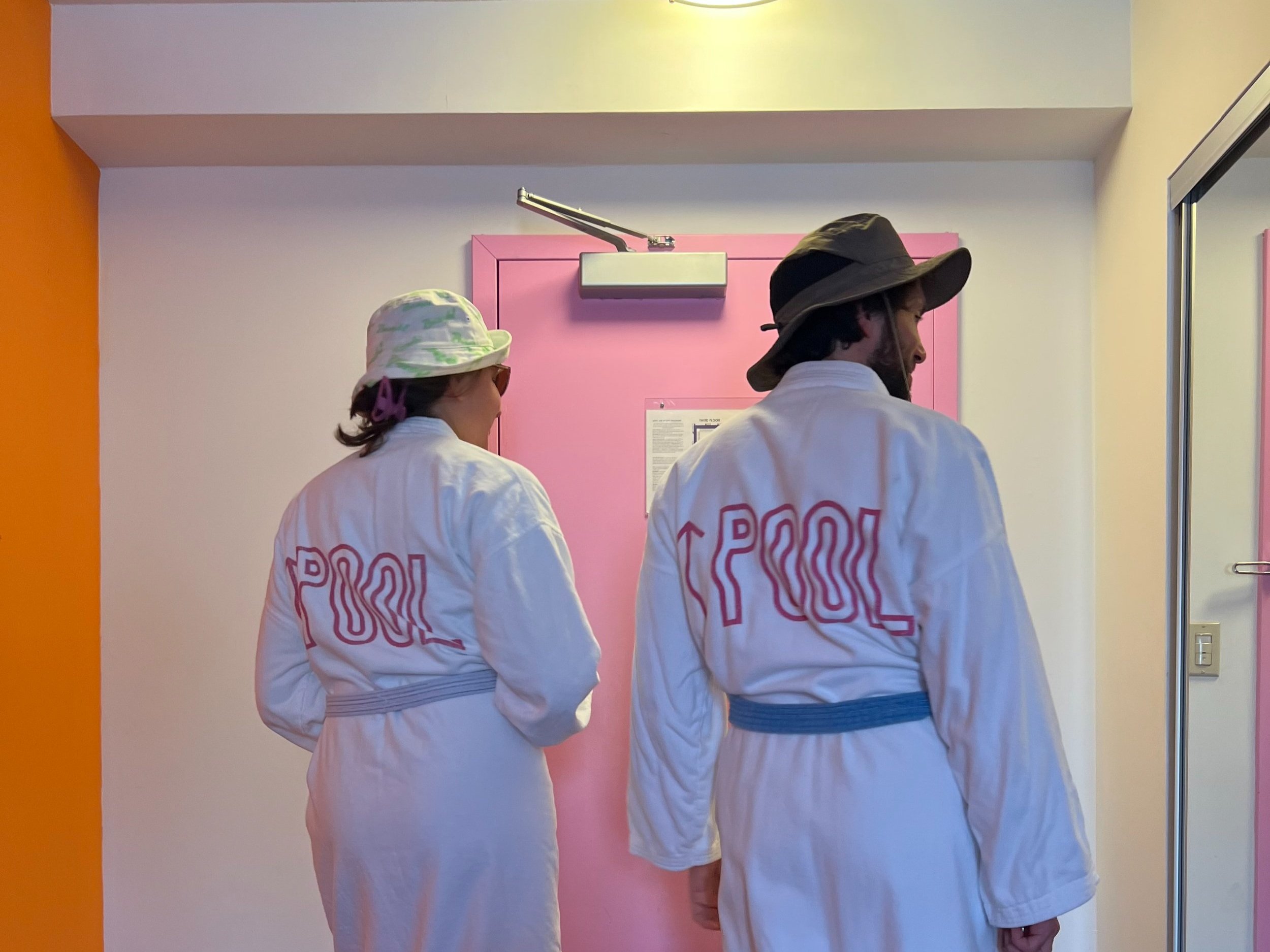
Final Projects: Group LI
This exhibition marks the culmination of the Artists & Architects-in-Residence Program at the Mackey Apartments.
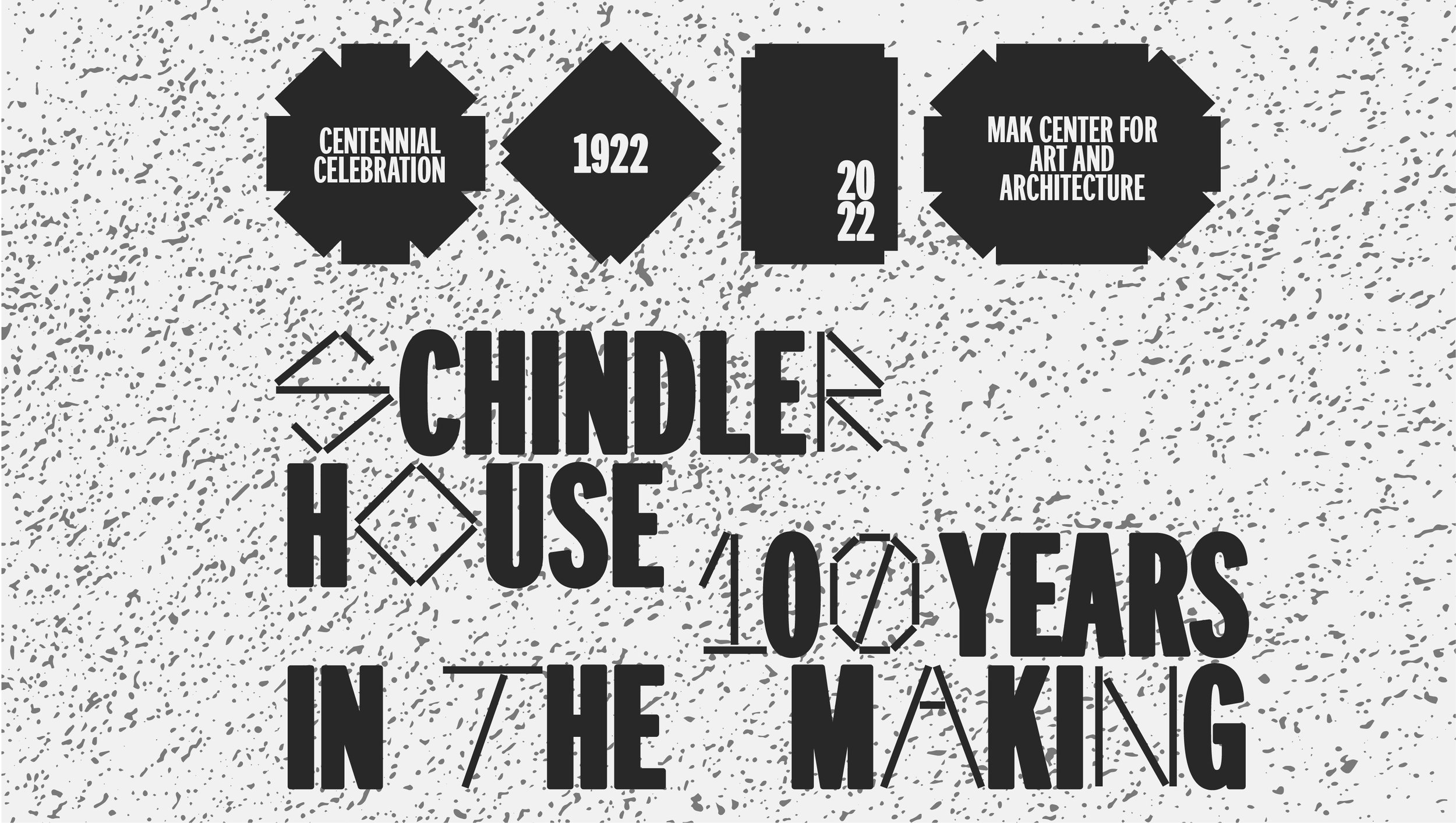
Schindler House: 100 Years in the Making
On the occasion of the one hundred year anniversary of the landmark Schindler House, the MAK Center for Art and Architecture is pleased to present Schindler House 100 Years in the Making.
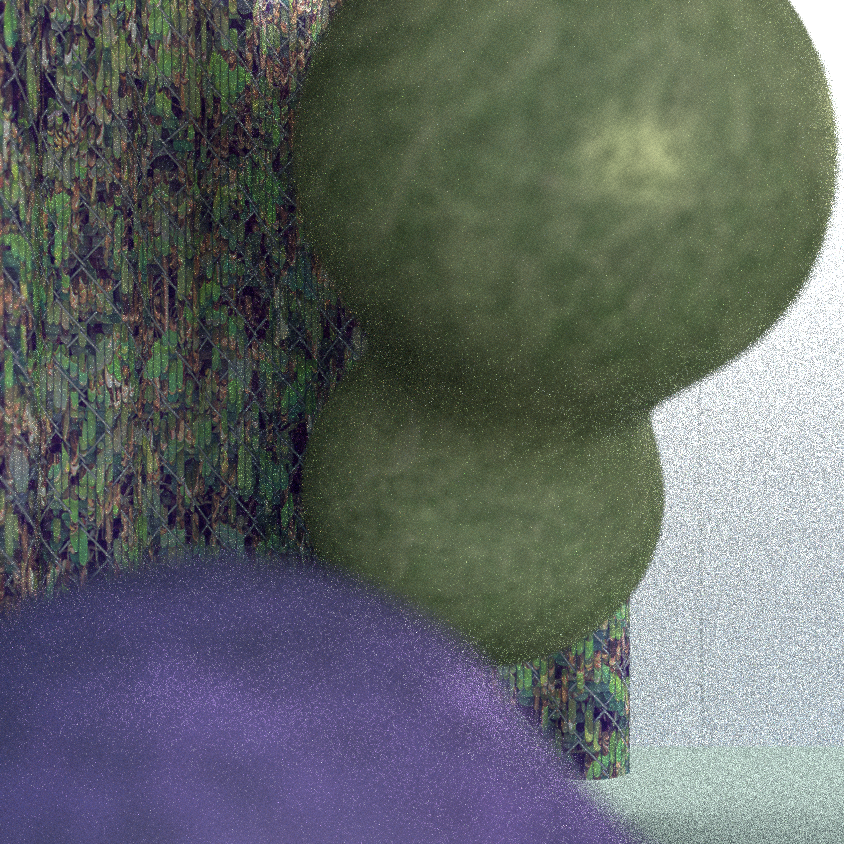
Garage Exchange: Cosmic Commissioner
The MAK Center for Art and Architecture is pleased to present the nineteenth iteration of Garage Exchange Vienna — Los Angeles, Cosmic Commissioner. Vienna-based artists Hanakam & Schuller collaborate with Los Angeles architects Current Interests to develop a mise en scène for the Mackey Apartment's Garage Top Gallery.

Final Projects: Group L
This exhibition marks the culmination of the Artists & Architects-in-Residence Program at the Mackey Apartments.
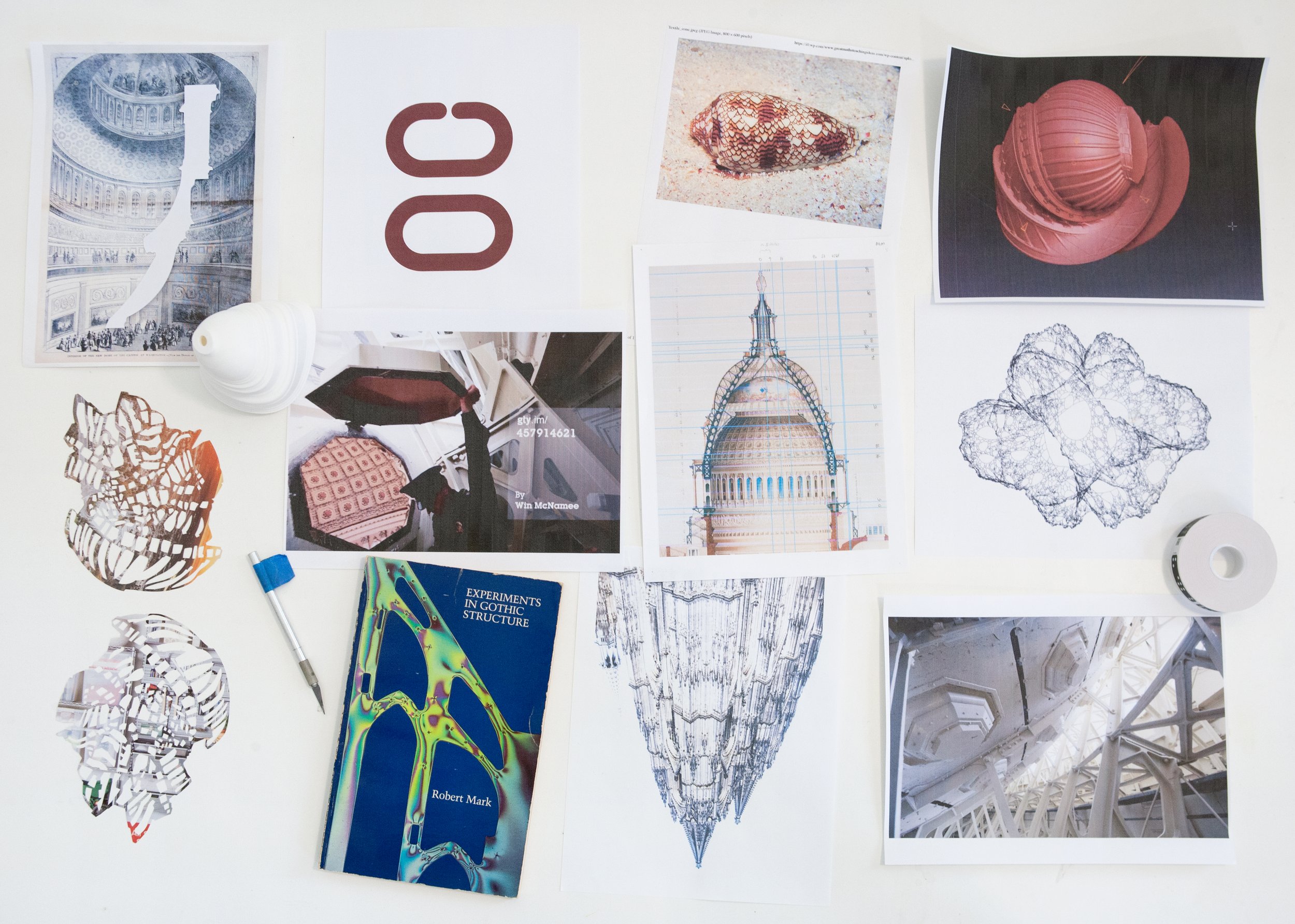
Kristin Posehn: Inverted Dome
Image courtesy of the artist.
The MAK Center for Art & Architecture presents Inverted Dome, an exhibition of new work by Kristin Posehn at the Mackey Apartments Garage Top. Inverted Dome is an inquiry into the dynamics of light, technology, and perception generated by public architecture.
The exhibition’s central feature is an installation that reimagines the U.S. Capitol Dome as an inverted, open, and almost unrecognizable structure made of mirror, reflecting back both the environment and itself. Images of the Capitol Dome are continuously propagated by media organizations of all kinds—reproduced on web pages, news broadcasts, and social feeds—as if the building’s image has come to represent structures of power that are otherwise too abstract to locate. The room-sized installation is a container for holding and focusing light and its refractions, becoming a site for reflection on virtual mediation and transparency.
Inverted Dome references historical works of California light and space; augmented realities; architectures of the metaverse; considerations of public and private space; presence and absence; Monument to the Third International by Vladimir Tatlin; cryptography; information theory; and the mediation of power in daily life.
The exhibition includes an installation, a sequence of digital studies released online throughout the duration of the show, and a publication, which together suggest new spatial and experiential possibilities for public architecture.
Inverted Dome, 2022
Mirrored acrylic sheet
71 x 70 x 70 in.
Digital Study #1 (Mirror Chain), 2022
Digital sculpture
Release date: February 10, 2022
Instead of the inverted U.S. Capitol Dome currently installed within the physical gallery, in this virtual world we find a length of mirrored chain that stretches from floor to ceiling. Mirror Chain references both the concept of a blockchain first advanced by Satoshi Nakamoto in Bitcoin: A Peer-to-Peer Electronic Cash System, and the proliferation of cryptocurrencies that have followed in its wake. One is also invited to consider the phenomena of supply chains, chains that bind, and chains that are worn in popular culture to signal wealth and status.
Digital Study #2 (Azimuth Wave)
Digital sculpture
Release date: February 17, 2022
Azimuth is a type of angular measurement. It establishes an orientation in relation to a point of interest within a spherical coordinate system. The concept is typically used in navigation, mapping, astronomy, and other disciplines.
In everyday speech, a mirror is a surface that reflects back an inverted image of its surrounding environment. Mirrors in our homes are used for self-reflection, in our cars for navigation, and throughout cities as exterior cladding for skyscrapers. More broadly, a mirror is a wave reflector—optical mirrors reflect light waves, but other types of mirrors reflect audio or even atomic waves.
Digital Study #3 (Training Phantom)
Digital sculpture
Release date: February 24, 2022
The following excerpt from an interview between exhibition curator Aurora Tang and artist Kristin Posehn accompanied the digital study release:
TANG: How do you see these digital studies in relation to the physical exhibition?
POSEHN: It's been a back-and-forth evolution. As I was fabricating the sculpture, installing, and then documenting it, I was also 3D modelling the gallery. It was fascinating to be in the gallery and observe how light falls in the space at different times of day, and then go to my studio and juxtapose that with how light was being rendered in the 3D environment I was building. The conversations we've had in the gallery and responses from visitors have brought up new ideas that are filtering into the studies. It's been a way for the work to continue to unfold, respond, and reflect in real time.
Digital Study #4 (Chimera)
Digital sculpture animation
Release date: March 3, 2022
A chimera is an organism composed of multiple tissues with different genetic composition. In Greek mythology, a chimera is a hybrid being — part lion, goat, and snake. As an animation, Digital Study #4 (Chimera) morphs between three states in an infinite loop, reflecting an otherwise unseen backdrop all the while.
Casting Glances with Kristin Posehn: Inverted Dome
An informal listening event, featuring a playlist of audio tracks selected by artists, including: Kathryn Andrews, Scott Benzel. Holly Childs, Steven Chodoriwsky, Alice Könitz, Rita McBride & Glen Rubsamen, Linda Persson, Imogen Stidworthy, Nasrin Tabatabai & Babak Afrassiabi, Peter Wu+, Jayme Yen, and Andros Zins-Browne.
Sunday, February 20, 2022
2:00 PM – 5:00 PM
The Casting Glances Playlist:
Kathryn Andrews — Marking Time by Pauline Anna Strom, 2020, 4:28
Imogen Stidworthy — Telahumo by Nicholas Jaar, 2020, 14:20
Rita McBride & Glen Rubsamen — Tubular Bells Flipped and Reversed, 3:16
Alice Könitz — Petrachus Pot (sound recovered from an urn), :43
Peter Wu+ — Music for 18 Musicians: Pulses II by Steve Reich, 1998, 6:10
Jayme Yen — Smashmouth Playing in a Cave, 3:22
Andros Zins-Browne — Fearless Vampire Killers by Bad Brains, 1982, 1:07
Nasrin Tabatabai & Babak Afrassiabi — Structures for Sound by Francois & Bernard Baschet, 1963, 5:27
Linda Persson — Spirit Animal (original composition), 2022, 12:58
Steven Chodoriwsky — Crater Canticle (original composition), 2022, 2:50
Holly Childs — Meisou (Dark Slumber) by Geinoh Yamashirogumi, 1986, 5:11
Scott Benzel — Pandaemonium (original composition), 2022, 19:07
Publication Release
Schindler House
Friday, April 29, 2022
6:00 PM – 8:00 PM
Kristin Posehn: Inverted Dome is organized by Aurora Tang. This exhibition is made possible with support from the Pasadena Art Alliance and the MAK Center Patron Program.
Artists
Kristin Posehn
Kristin Posehn is an artist based in Los Angeles. She received a Ph.D. in Sculpture from the Winchester School of Art, Winchester, UK, and held a two-year research and production residency at the Van Eyck, Maastricht, NL. She has taught at Oxford University, Woodbury University, Winchester School of Art, and Duke University. Posehn was awarded the Hermine Van Bers Art Prize in 2009, and has received grants and commissions including from the Bonnefanten Museum, Museum De Paviljoens, Brooklyn Historical Society, and Netwerk Center for Contemporary Art. The Center for Art + Environment at the Nevada Museum of Art maintains a collection of materials from Posehn’s architectural installations, and dedicated a solo show to this work in 2017. Recent exhibits include Manic Castle Hash at Open Wall Salon / Binomial Nomenclature in Los Angeles (2020); and Substrata at EPOCH/Los Angeles Museum of Art (2021).
Related events
Opening Reception
Thu, Jan 22, 2022
6pm-8pm
Publication Release
Fri, April 22, 2022
6pm-8pm
Inverted Dome is organized by Aurora Tang.
This exhibition is made possible with support from the Pasadena Art Alliance and the MAK Center Patron Program.
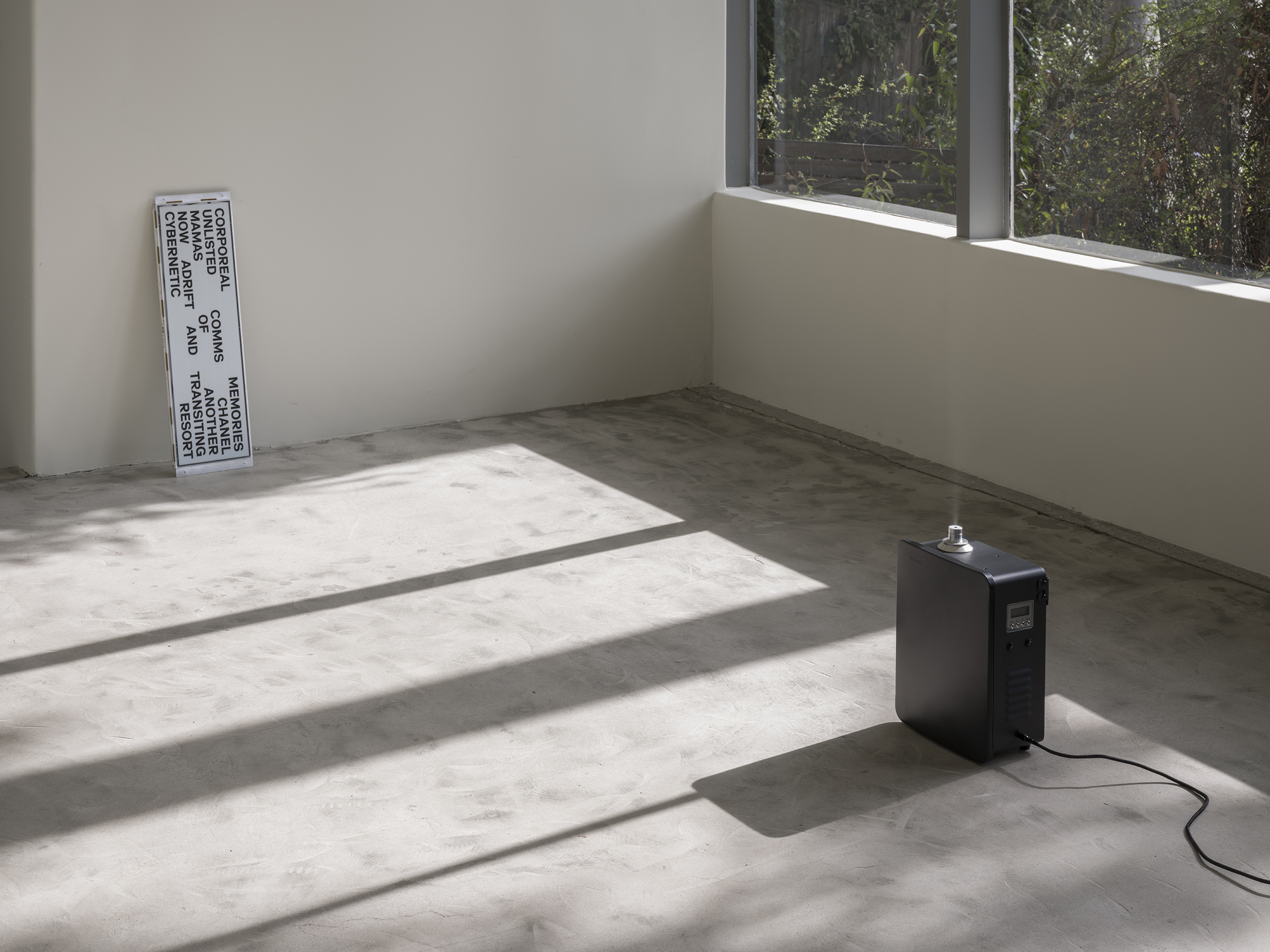
Florian Hecker - Resynthesizers
Equitable Vitrines presents Resynthesizers, a project by Florian Hecker (b. 1975, Germany) sited within an outstanding example of early Los Angeles Modernism: the Fitzpatrick-Leland House, designed by RM Schindler in 1936, owned and operated by the MAK Center for Art and Architecture.

Garage Exchange: Aleksandra Domanović and Jen Liu
The MAK Center for Art and Architecture in collaboration with the Art + Technology Lab at LACMA presents new work from Aleksandra Domanović and Jen Liu for the eighteenth iteration of the Garage Exchange series.
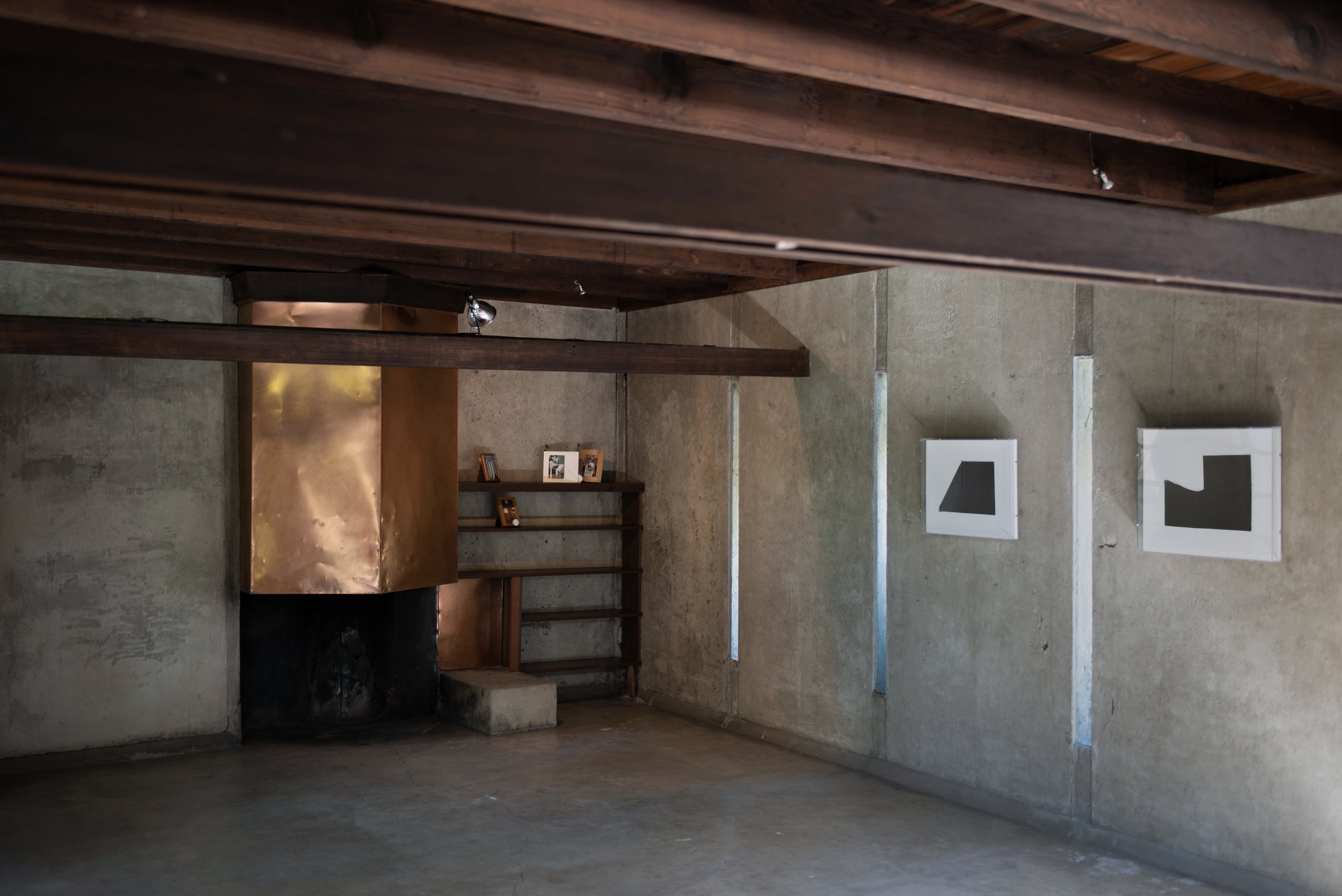
I hear the ancient music of words and words, yes, that’s it.
MAK Center for Art & Architecture proudly presents Vincent Fecteau and Florian Pumhösl in the exhibition, I hear the ancient music of words and words, yes, that’s it., curated by Bärbel Vischer.
Exhibition Archive
-
2025
- Feb 27, 2025 – Mar 2, 2025 Final Projects: Group LVI - Realism Feb 27, 2025 – Mar 2, 2025
- Feb 19, 2025 – May 4, 2025 Helmut Lang: What remains behind Feb 19, 2025 – May 4, 2025
-
2024
- Sep 12, 2024 – Dec 8, 2024 Half-Life Sep 12, 2024 – Dec 8, 2024
- Aug 29, 2024 – Sep 2, 2024 Final Projects: Group LV Aug 29, 2024 – Sep 2, 2024
- Jun 22, 2024 – Sep 15, 2024 Entourage Jun 22, 2024 – Sep 15, 2024
- Apr 18, 2024 – Jun 16, 2024 Kathi Hofer and Preserve Bottle Village Committee Apr 18, 2024 – Jun 16, 2024
- Mar 7, 2024 – Mar 10, 2024 Final Projects: Group LIV Mar 7, 2024 – Mar 10, 2024
- Feb 28, 2024 – Apr 7, 2024 VALIE EXPORT: Embodied Feb 28, 2024 – Apr 7, 2024
-
2023
- Nov 11, 2023 – Feb 4, 2024 Print Ready Drawings Nov 11, 2023 – Feb 4, 2024
- Oct 19, 2023 – Jan 7, 2024 and yet you grow Oct 19, 2023 – Jan 7, 2024
- Sep 8, 2023 – Sep 10, 2023 Final Projects: Group LIII Sep 8, 2023 – Sep 10, 2023
- Jun 8, 2023 – Aug 6, 2023 Garage Exchange Vienna—Los Angeles: Plastic, Plastic, Plastic Jun 8, 2023 – Aug 6, 2023
- Apr 1, 2023 – Jul 23, 2023 Seeking Zohn Apr 1, 2023 – Jul 23, 2023
- Mar 10, 2023 – Mar 12, 2023 Final Projects: Group LII Mar 10, 2023 – Mar 12, 2023
- Feb 16, 2023 – Mar 12, 2023 Alex Katz: Sunrise Feb 16, 2023 – Mar 12, 2023
-
2022
- Dec 6, 2022 – Dec 11, 2022 Subject Studies: Reorientations Dec 6, 2022 – Dec 11, 2022
- Nov 10, 2022 – Jan 29, 2023 Garage Exchange: Maruša Sagadin & Jacqueline Kiyomi Gork Nov 10, 2022 – Jan 29, 2023
- Sep 1, 2022 – Sep 4, 2022 Final Projects: Group LI Sep 1, 2022 – Sep 4, 2022
- May 28, 2022 – Sep 25, 2022 Schindler House: 100 Years in the Making May 28, 2022 – Sep 25, 2022
- Apr 14, 2022 – Jul 3, 2022 Garage Exchange: Cosmic Commissioner Apr 14, 2022 – Jul 3, 2022
- Mar 17, 2022 – Mar 20, 2022 Final Projects: Group L Mar 17, 2022 – Mar 20, 2022
- Jan 22, 2022 – Mar 5, 2022 Kristin Posehn: Inverted Dome Jan 22, 2022 – Mar 5, 2022
-
2021
- Nov 21, 2021 – Mar 13, 2022 Florian Hecker - Resynthesizers Nov 21, 2021 – Mar 13, 2022
- Oct 21, 2021 – Jan 9, 2022 Garage Exchange: Aleksandra Domanović and Jen Liu Oct 21, 2021 – Jan 9, 2022
- Oct 16, 2021 – Feb 20, 2022 I hear the ancient music of words and words, yes, that’s it. Oct 16, 2021 – Feb 20, 2022
- Aug 26, 2021 – Oct 3, 2021 Garage Exchange: Antwerp with Benjamin Hirte and Nancy Lupo Aug 26, 2021 – Oct 3, 2021
- May 1, 2021 – Sep 12, 2021 Autonomous Design May 1, 2021 – Sep 12, 2021
-
2020
- Oct 17, 2020 – Mar 28, 2021 DEMO Oct 17, 2020 – Mar 28, 2021
- Sep 26, 2020 AMEND Sep 26, 2020
- Sep 17, 2020 – Sep 20, 2020 wedidntwanttoleave.live Sep 17, 2020 – Sep 20, 2020
- Sep 3, 2020 – Oct 31, 2020 Time is Out of Joint Sep 3, 2020 – Oct 31, 2020
- Mar 5, 2020 – Mar 8, 2020 Final Projects: Group XLIX Mar 5, 2020 – Mar 8, 2020
- Jan 18, 2020 – Feb 29, 2020 Scoring, Building Jan 18, 2020 – Feb 29, 2020
-
2019
- Nov 23, 2019 – Jan 11, 2020 Garage Exchange: Christoph a. Kumpusch of Forward-slash (/) Architektur with Youmna Chlala Nov 23, 2019 – Jan 11, 2020
- Oct 12, 2019 – Feb 16, 2020 Soft Schindler Oct 12, 2019 – Feb 16, 2020
- Sep 5, 2019 – Sep 7, 2019 Final Projects: Group XLVIII Sep 5, 2019 – Sep 7, 2019
- May 2, 2019 – Jun 29, 2019 Garage Exchange: Constanze Schweiger and 69 May 2, 2019 – Jun 29, 2019
- Mar 7, 2019 – Mar 13, 2019 Final Projects: Group XLVII Mar 7, 2019 – Mar 13, 2019
- Feb 9, 2019 – Jun 2, 2019 Shelter or Playground: The House of Dust at the Schindler House Feb 9, 2019 – Jun 2, 2019
-
2018
- Oct 17, 2018 – Dec 8, 2018 Garage Exchange: SPAN (Matias del Campo and Sandra Manninger) and Jay Yan Oct 17, 2018 – Dec 8, 2018
- Sep 16, 2018 – Jan 6, 2019 Edmund de Waal: -one way or other- Sep 16, 2018 – Jan 6, 2019
- Aug 23, 2018 – Aug 31, 2018 Final Projects: Group XLVI Aug 23, 2018 – Aug 31, 2018
- Jun 30, 2018 – Sep 2, 2018 Poetic Structure: Art + Engineering + Architecture Jun 30, 2018 – Sep 2, 2018
- May 11, 2018 – Aug 12, 2018 Fiona Connor: Closed Down Clubs May 11, 2018 – Aug 12, 2018
- Mar 9, 2018 – May 5, 2018 Garage Exchange: The Visitor - Alfredo Barsuglia & Alice Könitz Mar 9, 2018 – May 5, 2018
- Feb 25, 2018 – Mar 4, 2018 Home, Hood, Hill - Final Projects: Group XLV Feb 25, 2018 – Mar 4, 2018
- Feb 3, 2018 – Apr 15, 2018 Public Fiction: The Conscientious Objector Feb 3, 2018 – Apr 15, 2018
- Jan 11, 2018 – Feb 11, 2018 Pin-up: A Designed Tribute to Schindler’s L.A. Jan 11, 2018 – Feb 11, 2018
-
2017
- Nov 9, 2017 – Jan 6, 2018 Garage Exchange: Gravity’s Peacock - Johann Lurf & Brice Bischoff Nov 9, 2017 – Jan 6, 2018
- Sep 9, 2017 – Jan 14, 2018 How to Read El Pato Pascual Sep 9, 2017 – Jan 14, 2018
- Aug 20, 2017 – Sep 4, 2017 Final Projects: Group XLIV Aug 20, 2017 – Sep 4, 2017
- Jun 17, 2017 – Aug 6, 2017 LUSH Jun 17, 2017 – Aug 6, 2017
- May 11, 2017 – Jul 30, 2017 Garage Exchange: Sabine Bitter & Helmut Weber / Edgar Arceneaux May 11, 2017 – Jul 30, 2017
- Mar 23, 2017 – Apr 23, 2017 You may add or subtract from the work: On the work of Christopher D’Arcangelo and Michael Asher Mar 23, 2017 – Apr 23, 2017
- Mar 9, 2017 – Jun 4, 2017 Mandla Reuter: Wasser Mar 9, 2017 – Jun 4, 2017
- Feb 17, 2017 – Feb 26, 2017 Final Projects: Group XLIII Feb 17, 2017 – Feb 26, 2017
-
2016
- Nov 4, 2016 – Feb 4, 2017 Garage Exchange: Jun Yang / Bruce Yonemoto Nov 4, 2016 – Feb 4, 2017
- Oct 20, 2016 – Jan 8, 2017 The Stephanie Taylor Kong Boos Oct 20, 2016 – Jan 8, 2017
- Sep 10, 2016 – Sep 11, 2016 Final Projects: Group XLII Sep 10, 2016 – Sep 11, 2016
- May 25, 2016 – Aug 14, 2016 Routine Pleasures May 25, 2016 – Aug 14, 2016
- Apr 21, 2016 – Jun 25, 2016 Garage Exchange: Past Future Housing - Morgan Fisher / Karina Nimmerfall Apr 21, 2016 – Jun 25, 2016
- Apr 9, 2016 – May 8, 2016 House Housing: An Untimely History of Architecture and Real Estate in Thirty-one Episodes Apr 9, 2016 – May 8, 2016
- Mar 11, 2016 – Mar 12, 2016 Final Projects: Group XLI - We Only Went to NASA Together Mar 11, 2016 – Mar 12, 2016
- Jan 28, 2016 – Mar 27, 2016 Erwin Wurm: One Minute Sculptures Jan 28, 2016 – Mar 27, 2016
-
2015
- Nov 13, 2015 – Mar 5, 2016 Garage Exchange: Spomenici revolucije - Marko Lulić / Sam Durant Nov 13, 2015 – Mar 5, 2016
- Sep 10, 2015 – Dec 6, 2015 R.M. Schindler: The Prequel Sep 10, 2015 – Dec 6, 2015
- Sep 5, 2015 – Feb 6, 2016 Final Projects: Group XL Sep 5, 2015 – Feb 6, 2016
- Jun 10, 2015 – Aug 16, 2015 The New Creativity: Man and Machines Jun 10, 2015 – Aug 16, 2015
- May 1, 2015 – Aug 29, 2015 Garage Exchange: Fictitious Tales About the History of Earth May 1, 2015 – Aug 29, 2015
- Apr 17, 2015 – May 17, 2015 A Vast Furniture: Installation by Carmen Argote Apr 17, 2015 – May 17, 2015
- Apr 6, 2015 – Aug 28, 2015 Los Bar Apr 6, 2015 – Aug 28, 2015
- Mar 13, 2015 – Mar 15, 2015 Final Projects: Group XXXIX Mar 13, 2015 – Mar 15, 2015
- Jan 21, 2015 – Mar 29, 2015 Renée Green: Begin Again, Begin Again Jan 21, 2015 – Mar 29, 2015
-
2014
- Oct 25, 2014 – Jan 4, 2015 Groundswell: Guerilla Architecture In Response To The Great East Japan Earthquake Oct 25, 2014 – Jan 4, 2015
- Oct 3, 2014 – Oct 29, 2014 The Entire Situation: An Installation by Erin Besler Oct 3, 2014 – Oct 29, 2014
- Sep 4, 2014 – Sep 7, 2014 Final Projects: Group XXXVIII Sep 4, 2014 – Sep 7, 2014
- Jun 18, 2014 – Sep 7, 2014 Tony Greene: Room of Advances Jun 18, 2014 – Sep 7, 2014
- Apr 18, 2014 – Aug 16, 2014 Garage Exchange: The Eden’s Edge Project Apr 18, 2014 – Aug 16, 2014
- Apr 9, 2014 – Jun 1, 2014 AV Andrea Fraser Vanessa Place Apr 9, 2014 – Jun 1, 2014
- Mar 14, 2014 – Mar 16, 2014 Final Projects Group XXXVII - jaywalk Mar 14, 2014 – Mar 16, 2014
- Jan 29, 2014 – Mar 9, 2014 City in a City: A Decade of Urban Thinking by Steven Holl Architects Jan 29, 2014 – Mar 9, 2014
-
2013
- Nov 7, 2013 – Mar 1, 2014 Garage Exchange: Constanze Ruhm & Christine Lang and First Office Nov 7, 2013 – Mar 1, 2014
- Oct 13, 2013 – Jan 5, 2014 A Little Joy of a Bungalow Oct 13, 2013 – Jan 5, 2014
- Sep 13, 2013 – Sep 15, 2013 Final Projects: Group XXXVI - SMILE Sep 13, 2013 – Sep 15, 2013
- May 8, 2013 – Aug 4, 2013 Everything Loose Will Land May 8, 2013 – Aug 4, 2013
- Apr 19, 2013 – Aug 10, 2013 Garage Exchange Smooth Matter Apr 19, 2013 – Aug 10, 2013
- Mar 8, 2013 – Mar 10, 2013 Final Projects: Group XXXV Mar 8, 2013 – Mar 10, 2013
- Feb 14, 2013 – Apr 7, 2013 Plan your visit Feb 14, 2013 – Apr 7, 2013
-
2012
- Nov 16, 2012 – Mar 2, 2013 Garage Exchange: Double Crossings - Hans Schabus and the Center for Land Use Interpretation Nov 16, 2012 – Mar 2, 2013
- Sep 6, 2012 – Sep 9, 2012 Final Projects Group XXXIV - Material and Culture Sep 6, 2012 – Sep 9, 2012
- Jun 8, 2012 – Sep 22, 2012 Garage Exchange: Bend a Bow Jun 8, 2012 – Sep 22, 2012
- May 15, 2012 – Aug 12, 2012 Out Spoken: Lectures from the Sci-Arc Media Archive May 15, 2012 – Aug 12, 2012
- Mar 9, 2012 – Mar 11, 2012 Final Projects: Group XXXIII Mar 9, 2012 – Mar 11, 2012
-
2011
- Sep 28, 2011 – Jan 29, 2012 Sympathetic Seeing: Esther McCoy and the Heart of American Modernist Architecture and Design Sep 28, 2011 – Jan 29, 2012
- Sep 8, 2011 – Sep 11, 2011 Final Projects: Group XXXII Sep 8, 2011 – Sep 11, 2011
- Jun 17, 2011 – Aug 6, 2011 Light Pavilion Jun 17, 2011 – Aug 6, 2011
- Mar 10, 2011 – Mar 13, 2011 Final Projects: Group XXXI Mar 10, 2011 – Mar 13, 2011
- Mar 5, 2011 – Apr 24, 2011 Schinder Lab, Round One Mar 5, 2011 – Apr 24, 2011
- Jan 5, 2011 – Feb 11, 2011 91 92 93 Jan 5, 2011 – Feb 11, 2011
-
2010
- Sep 16, 2010 – Oct 16, 2010 Brandon Lattu: Reciprocity of Light Sep 16, 2010 – Oct 16, 2010
- Sep 10, 2010 – Sep 12, 2010 Final Projects: Group XXX Sep 10, 2010 – Sep 12, 2010
- Jun 25, 2010 – Sep 29, 2010 Fractional Systems.Garage Project II Jun 25, 2010 – Sep 29, 2010
- Mar 12, 2010 – Mar 16, 2010 Final Projects: Group XXIX Mar 12, 2010 – Mar 16, 2010
- Feb 8, 2010 – Jun 30, 2010 How Many Billboards? Art in Stead Feb 8, 2010 – Jun 30, 2010
-
2009
- Nov 3, 2009 – Jan 31, 2010 Otto Neurath. Gypsy Urbanism Nov 3, 2009 – Jan 31, 2010
- Sep 4, 2009 – Sep 9, 2009 Final Projects: Group XXVIII Sep 4, 2009 – Sep 9, 2009
- May 27, 2009 – Aug 23, 2009 The Isle May 27, 2009 – Aug 23, 2009
- Mar 13, 2009 – Mar 15, 2009 Final Projects: Group XXVII Mar 13, 2009 – Mar 15, 2009
- Jan 15, 2009 – Mar 9, 2009 Locus Remix. Three Contemporary Positions: Dorit Margreiter Jan 15, 2009 – Mar 9, 2009
-
2008
- Nov 5, 2008 – Jan 4, 2009 Locus Remix. Three Contemporary Positions: Ismail Farouk - “Cancelled Without Prejudice” Nov 5, 2008 – Jan 4, 2009
- Sep 4, 2008 – Oct 26, 2008 Locus Remix. Three Contemporary Positions: Katie Grinnan - “Polaris” Sep 4, 2008 – Oct 26, 2008
- Aug 20, 2008 – Aug 24, 2008 Final Projects: Group XXVI - ReadyFasterBurnsLonger Aug 20, 2008 – Aug 24, 2008
- Jun 20, 2008 Hinterland Jun 20, 2008
- Mar 9, 2008 – Mar 16, 2008 Hana Reichman Gallery Mar 9, 2008 – Mar 16, 2008
- Mar 6, 2008 – Mar 9, 2008 Final Projects: Group XXV - Ah CA va bien Mar 6, 2008 – Mar 9, 2008
-
2007
- Nov 10, 2007 – Feb 24, 2008 Victor Burgin: The Little House Nov 10, 2007 – Feb 24, 2008
- Sep 6, 2007 – Sep 9, 2007 Final Projects: Group XXIV - The Mystery of Life Sep 6, 2007 – Sep 9, 2007
- May 17, 2007 – Aug 26, 2007 Arnulf Rainer: Hyper-Graphics May 17, 2007 – Aug 26, 2007
- Mar 8, 2007 – Mar 11, 2007 Final Projects: Group XXIII - Exquisite Corpse Mar 8, 2007 – Mar 11, 2007
-
2006
- Oct 29, 2006 – Feb 25, 2007 The Gen[H]ome Project Oct 29, 2006 – Feb 25, 2007
- Sep 6, 2006 – Sep 10, 2006 Final Projects: Group XXII - CENTER Sep 6, 2006 – Sep 10, 2006
- Mar 10, 2006 – Mar 12, 2006 Final Projects: Group XXI - Love After the Cold War in an Open House of a (Re) Constructed Babylon by a Popular Mechanic Mar 10, 2006 – Mar 12, 2006
-
2005
- Sep 23, 2005 – Sep 25, 2005 Final Projects: Group XX - ‘glass, concrete and stone, it’s just a house not a home’ Sep 23, 2005 – Sep 25, 2005
- Jul 15, 2005 – Oct 23, 2005 Isaac Julien: True North Jul 15, 2005 – Oct 23, 2005
- May 13, 2005 Final Projects: Group XIX - Friday the 13th May 13, 2005
- Mar 31, 2005 – Jun 26, 2005 Günther Domenig: Structures That Fit My Nature Mar 31, 2005 – Jun 26, 2005
- Jan 7, 2005 – Feb 20, 2005 Jesse Webber: Hitch Jan 7, 2005 – Feb 20, 2005
- Jan 7, 2005 – Feb 20, 2005 Amir Zaki: Spring Through Winter Jan 7, 2005 – Feb 20, 2005
-
2004
- Sep 7, 2004 – Sep 9, 2004 Final Projects: Group XVIII - Mandatory Sep 7, 2004 – Sep 9, 2004
- May 14, 2004 – Aug 29, 2004 Yves Klein: Air Architecture May 14, 2004 – Aug 29, 2004
- Mar 12, 2004 – Mar 14, 2004 Final Projects: Group XVII - It’s Time to Stay Home and Get Some Audience Mar 12, 2004 – Mar 14, 2004
- Feb 6, 2004 – Mar 17, 2004 3 Fireplaces and 2 Bathtubs Feb 6, 2004 – Mar 17, 2004
-
2003
- Aug 15, 2003 – Sep 7, 2003 Final Projects: Group XVI - Absolute L.A. International Aug 15, 2003 – Sep 7, 2003
- Aug 6, 2003 – Dec 7, 2003 Schindler’s Paradise: Architectural Resistance Aug 6, 2003 – Dec 7, 2003
- Mar 21, 2003 – Mar 23, 2003 Final Projects: Group XV Mar 21, 2003 – Mar 23, 2003
- Feb 16, 2003 – Feb 23, 2003 Plugged and Haunted: Garage Projects at the Mackey Apartments Feb 16, 2003 – Feb 23, 2003
- Jan 29, 2003 – Jul 27, 2003 TRESPASSING: Houses x Artists Jan 29, 2003 – Jul 27, 2003
-
2002
- Dec 15, 2002 – Dec 22, 2002 Home Scenes: 8 Days of Revision Dec 15, 2002 – Dec 22, 2002
- Oct 11, 2002 – Jan 15, 2003 Desert cloud <transformer3> Oct 11, 2002 – Jan 15, 2003
- Sep 18, 2002 – Sep 29, 2002 Final Projects: Group XIV Sep 18, 2002 – Sep 29, 2002
- May 9, 2002 – Sep 8, 2002 Gerald Zuggman: Blue Universe, Architectural Manifestos by COOP HIMMELB(L)AU May 9, 2002 – Sep 8, 2002
- Feb 1, 2002 – Feb 28, 2002 Final Projects: Group XIII Feb 1, 2002 – Feb 28, 2002
- Jan 23, 2002 – Apr 14, 2002 MARKINGS: Constructing Form through Drawing Jan 23, 2002 – Apr 14, 2002
-
2001
- Sep 20, 2001 – Oct 28, 2001 Final Projects: Group XII - 20/35 Vision Sep 20, 2001 – Oct 28, 2001
- Jul 20, 2001 – Sep 2, 2001 In Between: Art and Architecture - Part 3 Jul 20, 2001 – Sep 2, 2001
- Mar 17, 2001 – Mar 18, 2001 Final Projects: Group XI - RAIN Mar 17, 2001 – Mar 18, 2001
- Mar 9, 2001 – Sep 2, 2001 In Between: Art and Architecture - Part 2 Mar 9, 2001 – Sep 2, 2001
- Feb 16, 2001 – Feb 18, 2001 In Between: Art and Architecture - Part 1 Feb 16, 2001 – Feb 18, 2001
-
2000
- Dec 6, 2000 – Feb 25, 2001 Frederick J. Kiesler: Endless Space Dec 6, 2000 – Feb 25, 2001
- Oct 29, 2000 – Dec 17, 2000 heaven’s gift Oct 29, 2000 – Dec 17, 2000
- Sep 26, 2000 – Oct 15, 2000 Final Projects: Group X - Oxygen: Flipping through Frederick Kiesler Sep 26, 2000 – Oct 15, 2000
- Jun 2, 2000 – Sep 17, 2000 American Pictures 1961 - 1967: Photographs by Dennis Hopper Jun 2, 2000 – Sep 17, 2000
- Apr 14, 2000 – Apr 16, 2000 Final Projects: Group IX - If I was in L.A. Apr 14, 2000 – Apr 16, 2000
- Jan 26, 2000 – Feb 20, 2000 Location Proposal #2 Jan 26, 2000 – Feb 20, 2000
-
1999
- Oct 13, 1999 – Jan 16, 2000 Numbers Oct 13, 1999 – Jan 16, 2000
- Sep 22, 1999 Final Projects: Group VIII - Some Things to Be Seen or Taking Place not Necessarily Related to Each Other Sep 22, 1999
- Jul 22, 1999 – Sep 26, 1999 LIFE/BOAT Jul 22, 1999 – Sep 26, 1999
- Jun 2, 1999 – Jul 11, 1999 Micro Space/Global Time: An Architectural Manifesto Jun 2, 1999 – Jul 11, 1999
- Mar 19, 1999 – Mar 21, 1999 Final Projects: Group VII Mar 19, 1999 – Mar 21, 1999
- Mar 10, 1999 – May 30, 1999 Architecture and Revolution: Escuelas Nacionales de Arte en La Habana Mar 10, 1999 – May 30, 1999
-
1998
- Oct 28, 1998 – Jan 17, 1999 The best animals are the flat animals Oct 28, 1998 – Jan 17, 1999
- Sep 19, 1998 – Sep 26, 1998 Final Projects: Group VI Sep 19, 1998 – Sep 26, 1998
- Jul 9, 1998 Martin Kippenberger, The Last Stop West Jul 9, 1998
- Mar 13, 1998 – Mar 29, 1998 Final Projects: Group V - Befejezett Munka Mar 13, 1998 – Mar 29, 1998
- Feb 3, 1998 – Feb 28, 1998 Twelve Projects by R.M. Schindler Feb 3, 1998 – Feb 28, 1998
-
1997
- Nov 17, 1997 – Jan 18, 1998 Anarchitecture: Works by Gordon Matta-Clark Nov 17, 1997 – Jan 18, 1998
- Sep 13, 1997 – Sep 28, 1997 Final Projects: Group IV - Ich bin ein L.A. Sep 13, 1997 – Sep 28, 1997
- Jul 18, 1997 L.A.NDING Jul 18, 1997
- Mar 20, 1997 – Mar 22, 1997 Final Projects: Group III - Open House / Open Studio Mar 20, 1997 – Mar 22, 1997
- Mar 19, 1997 – Aug 31, 1997 Silent & Violent: Selected Artists Mar 19, 1997 – Aug 31, 1997
- Feb 1, 1997 – Mar 22, 1997 room of displacement/loneliness Feb 1, 1997 – Mar 22, 1997
-
1996
- Sep 17, 1996 – Sep 30, 1996 Final Projects: Group II Sep 17, 1996 – Sep 30, 1996
- Apr 13, 1996 – Aug 27, 1996 The Havana Project, Architecture Again Apr 13, 1996 – Aug 27, 1996
- Apr 13, 1996 – Aug 14, 1996 The Garage Project Apr 13, 1996 – Aug 14, 1996
- Mar 18, 1996 – Mar 24, 1996 Final Projects: Group I - Art Protects You Mar 18, 1996 – Mar 24, 1996



